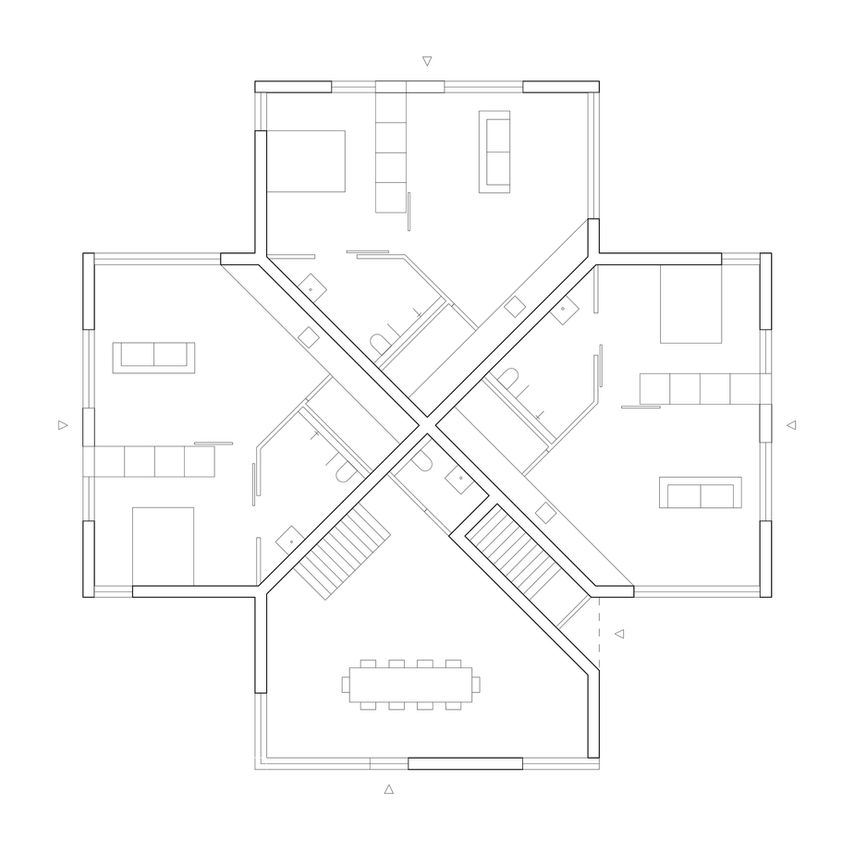top of page

The Social Landmark concept aims to improve social safety and neighbourliness between residents of different generations in the Hoje Gladsaxe district on the outskirts of Copenhagen. The proposal focuses spaces in between of the buildings of this typical post-war public housing neighbourhood. The ground level is theoretically the most accessible and common layer of a community, yet in reality it is often oversized, poorly designed and socially problematic in modernist urbanism. The Social Landmark reacts to this condition by addition rather than demolition. As an act of urban acupuncture, a series of small multifunctional buildings are carefully fitted into the wide street profiles of the existing car oriented infrastructure.

The architecture reacts to the strict geometric shapes of the existing fabric to introduce a-typical and recognisable nodes with visible daytime and evening activity on eye-level, contrasting the stark monotonous facades of the neighbouring flats. The small easy to build modular wooden structures combine targeted dwellings with a community-run amenity that serves the wider area. The program is crafted to meet the needs of different generations, increase the feeling of belonging and gently add density to ageing post-war districts. The idea is that with modest investments it is possible to introduce small town quality to the common grounds of medium to high rise apartment blocks.


project - Social Landmarks
program - 32 multigenerational dwellings, community
space and collective parking facilities
location - Copenhagen Denmark
status - competition Neighborhoods for Generations 2023
client - Landsbygefonden
bottom of page

























